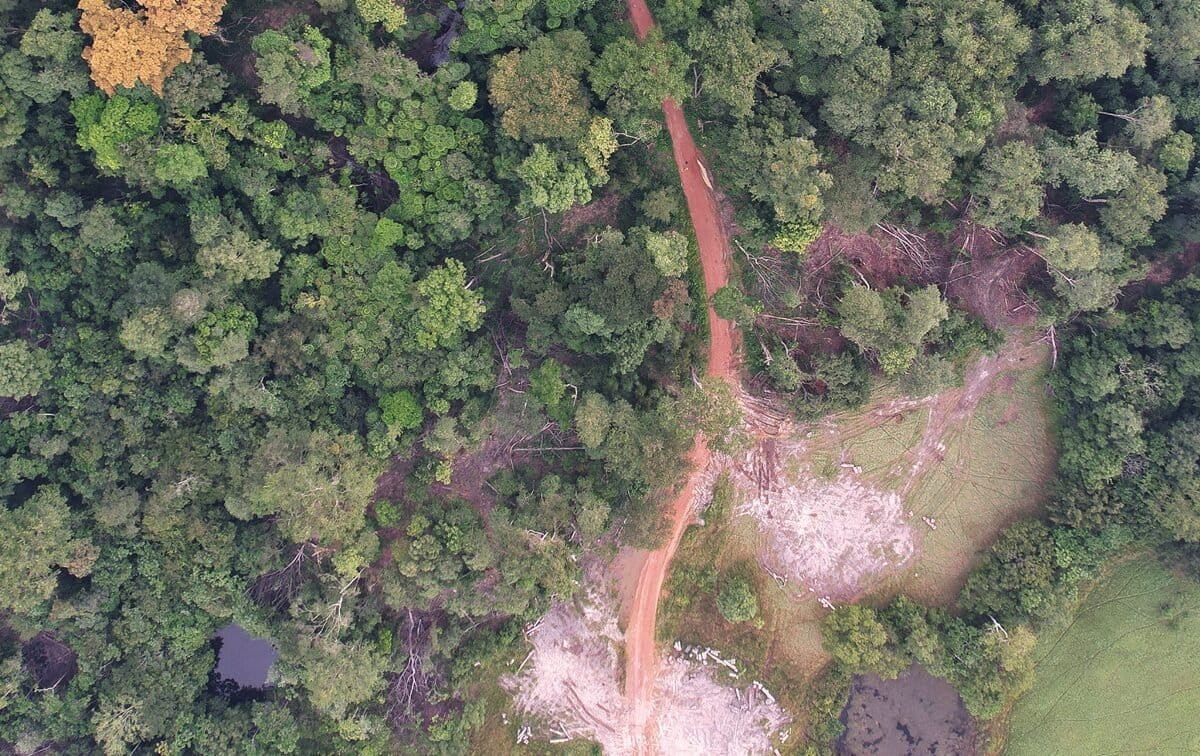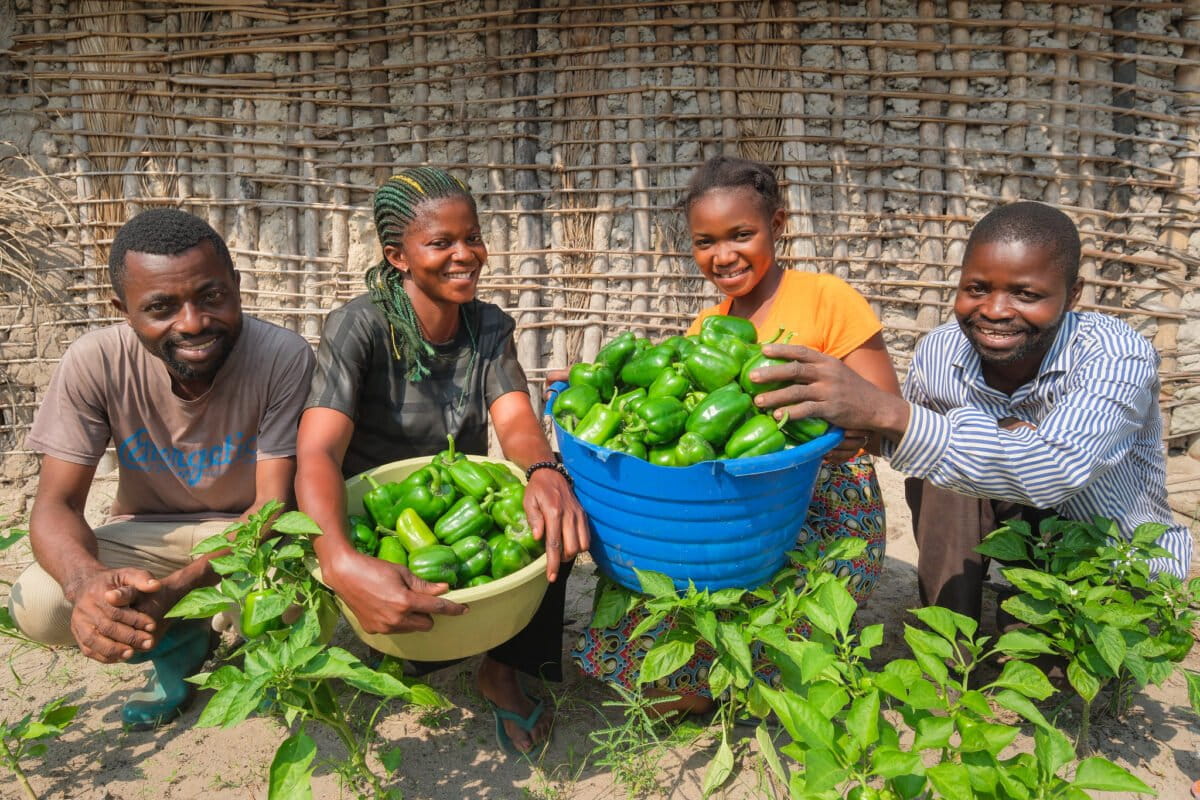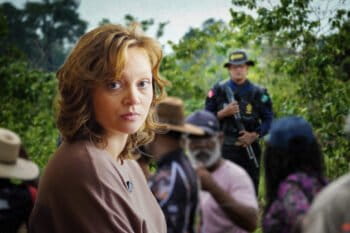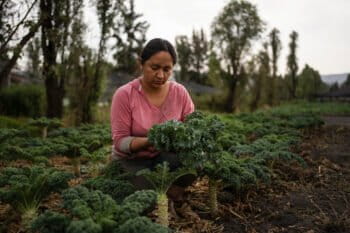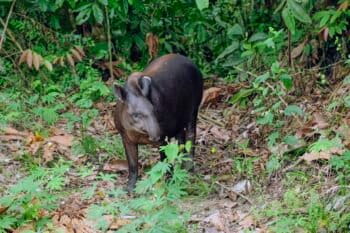TERRA NOSSA, Brazil — In 2024, Mongabay investigative reporter Fernanda Wenzel traveled to one of the most dangerous spots in the Brazilian Amazon — a region where a silent land war is destroying the forest and costing lives.
Her goal: to understand why three groups are locked in conflict here — land grabbers, settlers, and landless families — and how this battle pushes deforestation ever deeper into the rainforest.
Fernanda met a group of landless people camping in an area already designated as a land reform settlement — land that, on paper, belongs to settlers who were legally allocated those plots.
So why weren’t the settlers living there?
Because a third group, land grabbers, had taken it over. They illegally fenced off huge portions of the settlement, blocked the rightful settlers from entering, and even hired armed security to patrol the area and intimidate the landless families now occupying the plot.
“It’s a region where land is controlled by violence,” says land conflict expert Maurício Torres, who was also in the region accompanying Fernanda. “Whoever gets a piece of land is not the one who has it registered at the land registry office; it’s whoever is strongest and manages to expel the weakest.”
This is the root of Brazil’s land dispute crisis: a tiny elite controls large territories, while the majority of small farmers have little or no land. To escape the conflict, those small farmers push deeper into the forest, clearing new areas and driving deforestation.
In 2024, Brazil registered more than 1,700 land conflicts — the highest number in a decade. Most happened in the Amazon.
Mongabay’s Video Team wants to cover questions and topics that matter to you. Are there any inspiring people, urgent issues, or local stories that you’d like us to cover? We want to hear from you. Be a part of our reporting process—get in touch with us here!
Banner image: A group of security guards preventing people from crossing a checkpoint. ©Fernando Martinho.
Transcript
Notice: Transcripts are machine and human generated and lightly edited for accuracy. They may contain errors.When you’re in the presence of authorities
you become “smaller.”
– I’m the same person in front of everyone.
– No, you’re not.
I’ve always been polite.
I’ve always been polite,
you’re trying to create a situation here.
These people are on opposite sides
of a land war.
And this is Fernanda Wenzel, one of
our investigative reporters at Mongabay.
In November 2024, she traveled to one of
the most dangerous spots in the Brazilian Amazon
to see firsthand
what’s fueling this conflict.
On one side of the scene,
we have landless workers
who are fighting for a piece of land
in the Brazilian Amazon.
And on the other side, we have security guards
hired by land grabbers
who have illegally occupied
this piece of land
and who are actually sitting
miles away from the scene.
It’s a region where land is controlled by violence.
Whoever gets a piece of land
is not the one who has it
registered at the land registry office;
it’s whoever is strongest
and manages to expel the weakest.
Land conflicts in Brazil are one of
the main drivers of deforestation
and claim many lives every year.
In 2024, the number of conflicts hit
a decade-long high of more than 1,700.
Most of those cases occurred in the Amazon.
But why is this happening?
Fernanda went into the eye of the storm
to meet a group of landless people
who were camping in an area
that should be a land reform settlement,
which means that it has been already reserved
for other landless people.
However, instead of a settlement,
Fernanda found something similar to a ranch.
This area is a land reform settlement, called Terra Nossa
or, in English, “Our Land.”
It’s a very large area,
the size of the municipality of São Paulo.
It was created by the Land Reform Agency (INCRA) in 2006.
The problem is that this settlement
was never fully implemented …
The plan was to distribute
this land to 1,000 families,
but they could only distribute
the land to 300 families.
The rest of the families
never received the land
because it was already taken
by the land grabbers.
My mother said,
“Look, a settlement is going to be created…”
“We don’t know the area,
but don’t you want to apply?”
“And we don’t know how much land
we’re going to have.”
I said, “No, I want it. My dream has always been
to have a piece of land, right?”
We never imagined that [the area] would be closed.
So the landless people got there,
full of hope.
They put their tents up.
And then what happened?
A few days later,
this group of security guards arrived
in large black trucks,
and they are with guns …
The land grabbers
hired security guards
to prevent more people
from joining the group.
So there was a gate,
and the guards, they put
a kind of a checkpoint,
and they were there
with their guns
so nobody could
cross this checkpoint.
The only way to comunicate is like this,
through the fence.
If we cross it, we might get hit.
It was very tense that day.
There were people who left here
just to go get food in the city
and weren’t allowed back in.
Those who didn’t manage
to stay in
became the link between the group
and the outside world,
getting food, water and medicine
for the ones under siege.
Two ranchers were paying the security guards.
One of them is Bruno Heller.
He was targeted by a big Federal Police raid
a few years ago.
And the other man,
it’s a man who actually lives in Paraguay.
His name is Ari Friedler.
And he’s the one who claimed
to own the land
exactly in the area
[where] the camp was.
The only one who was there
representing these ranchers
was Friedler’s brother,
who briefly talked with us.
There won’t be conflict here.
You can be certain.
Only if it happens on their side.
We pray, read the Bible every day here.
I’m not afraid.
And I will only leave if this is sorted out.
You can be certain of that.
This is Maurício Torres.
A land conflict expert,
who was also in the area
to observe what was going on.
File a complaint,
report exactly what is happening,
and take it to the authorities
responsible for upholding the law.
Brazil is a huge country,
with a lot of empty land.
So why is access to it such a big issue?
The problem behind land disputes is that very few people
own very large pieces of land,
the size of municipalities, even.
And a lot of people live in small properties
or don’t have any land at all.
And that’s particularly true in the Amazon.
Of course we have those people who have been
in the Amazon for many decades
and who legally own
their piece of land.
But we also have many cases of ranchers
who illegally occupy public lands.
And they forge fake documents to pretend
they are the actual owners of these areas.
That’s what we call land grabbing.
And, unfortunately,
that’s very common in Brazil.
Sometimes it’s just about land speculation.
So, they deforest the area.
And once they do that,
the price of the land skyrockets.
And other times they raise cattle
or they grow soy.
The issue with this is that small peasants,
those farming for subsistence,
are pushed into the Amazon forest.
They either sell their land
to large ranchers
or are expelled by them.
And once they go farther
into the forest,
of course, they have
to open new areas …
So that’s a kind of
an endless cycle
that has been happening in the Brazilian Amazon
for many, many years,
which has been pushing deforestation
farther and farther.
For decades, the Brazilian government
has been trying to reduce this inequality
by distributing federal lands
to landless people,
in the so-called
land reform settlements.
In 2024, the current administration announced
an ambitious plan
to settle around 74,000 families by 2026.
But the plan is not going so well.
The government lacks the power to overcome opposition
from the agribusiness lobby in Congress.
In the last three decades,
we had, kind of, a paralysis
in the land reform policy in Brazil.
So landless people, they are taking matters
into their own hands.
And that’s why we saw a surge
in land occupations in the last two years.
There are now over 145,000 families in camps
waiting for a plot of land,
an 81% increase compared to 2022.
Many of them are in the Amazon.
And that is, of course,
fueling more conflicts in the region
like the one Fernanda witnessed.
The Terra Nossa settlement
could have been a successful case
of actual land distribution in the Amazon.
But while there,
Fernanda found that the settlers
who were originally
promised the land
are living under constant threats.
The most emblematic case
is the case of a woman called Maria Márcia.
She has survived many murder attempts at this point.
She always has to be
very careful about her routine
walking on the road inside the settlement,
for example,
because she can be ambushed
by the ranchers’ gunmen.
I went in there, into the woods.
They almost caught me, it was close.
I was lucky that I could run and hide in the woods.
But that day,
I thought I was going to die.
Fernanda: What if someone turns up?
Maria Márcia: Them?
We’ll have to run.
I’m not going to to wait [until they come].
Poverty is rapidly accelerating.
Families are taking out loans to plant crops here,
and before they can pay off the first installment
with the first harvest,
land grabbers come,
set fire to it,
and build fences,
taking over their land.
In more than 20 years of research,
I have rarely come across
a group as violated,
terrorized and besieged
as the Terra Nossa settlers.
There are already court orders
demanding that the land grabbers
leave the area.
But that’s easier said than done.
Usually, they hire expensive lawyers
to challenge those orders,
and react with violence
when law enforcers come to carry out them.
Back at the landless people’s camp,
Brazilian authorities finally turned up.
It had already been three weeks
since the siege started.
One of them was Antônio da Silva,
a government official who specializes
in resolving land disputes like this.
With years of experience,
he understood just how quickly
things could spiral out of control.
We’re very concerned because we know
that this region is very tense.
People don’t play games around here.
Many families who weren’t
at the land reform movement at the beginning
started arriving at the camp.
Because they knew that
these agents were coming
and they had a hope
of getting a piece of land, too.
So that scene
of all those people
arriving with their cars
or motorcycles
or even by foot at that place,
it was very emblematic of
how much demand for land
we have in this part of the Amazon.
And about the absence
of the government there.
And what happened to the landless people
who were occupying that plot?
Did they finally get the land?
Unfortunately, they didn’t get the land …
This land inside Terra Nossa settlement
is already promised to be distributed
to these 700 families
that are waiting since 2006.
Fernanda: So their demand is legitimate,
but they need to get in line.
Antônio: They will get in line as a second priority.
Fernanda: Is it a little frustrating
that you bring news that is not so good?
Antônio: It’s not as simple as they imagined, right?
That’s a little frustrating for us too.
But it’s the reality.
But probably part of the group
will have to be settled
in other land reform settlements
that may be created or not.
I believe that a solution will come out for this camp,
for this settlement project today.
I just want to thank you,
thank you very much.
Do you believe that landless people
will manage to get
a fairer distribution of land in Brazil?
It’s hard to say, but I don’t think that’s a good moment [now]
in Brazil for the landless movement.
The current administration
of President Lula [da Silva]
said that it has already settled
around 12,000 families.
But the grassroots movements
say these numbers are not real,
that they are inflated.
And given the strength of the agribusiness lobby
in the Brazilian Congress
and all these far-right
political movements
that we see in Brazil,
I don’t think we will have
many advances on this point.
How this land war will play out
is still uncertain.
But Fernanda will keep reporting
on this issue
to show how it is intrinsically connected
to the deforestation of the Amazon.
If you want to learn more
about what’s happening in the region,
you can follow Fernanda’s coverage
at Mongabay.com.



